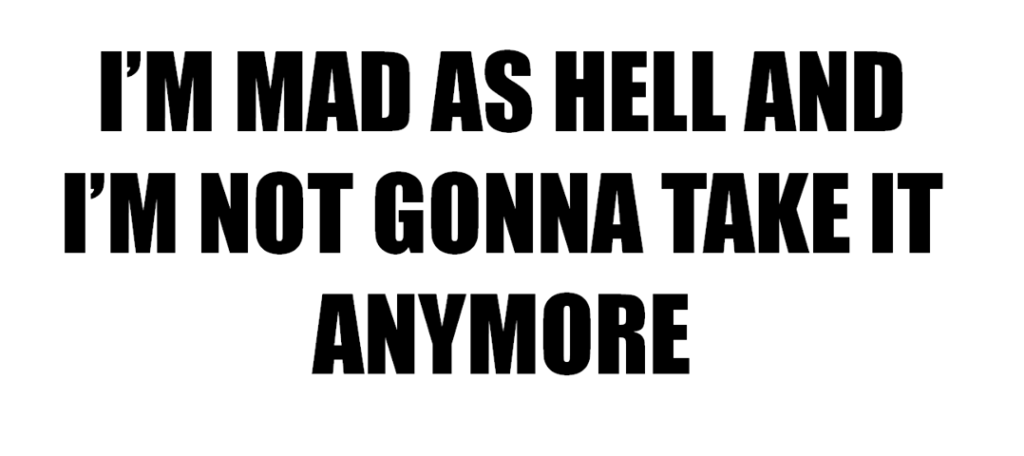So, what the f*ck is a Creative Factory? Tonight, in Teesside I saw it. The factory is what lives in the post-industrial husk of places like Middlesbrough. Towns and cities stripped to their bones through malign politics are revived by the industriousness of their people. The Creative Factory is the spirited community that inhabits and enlivens the culture of these locales.
A Creative Factory is whatever you want it to be, so as long that it is engineered via social enterprise for artistic success and the direct benefits that various intellectual and artistic endeavours within a wider society. An event played out in the courtrooms at Middlesbrough Town Hall, an event which proved that all those that the artists, curators and creatives inhabiting the North East share a belief in social betterment through acts of speech and art on collective responsibility. This evening’s intellectual magma bubbled along and at the point of closing ran dangerously close to erupting.
Cooler heads, smarter heads, more sensitive heads prevailed. Judge Grinder’s efficient and fair chairing was the plug to quell the volcano. He refused to let the evident passion and emotion of the speakers metamorphose into an irate lava, the kind of which would have burned disrepair into anyone’s reputation. This was after all, a place to network and to integrate, not disintegrate. His job was at times not easy, the physical manifestations of grief, disbelief, and irascibility were everywhere; not least in my sporadically whitened knuckles.
The Conservative Party, and indeed the advent of the neoliberal political agenda in British politics returned as a talking point throughout the evening. Dr. Stephen Pritchard, an eminent radical art historian waxed lyrical and philosophical about the problems of “meanwhile spaces” in relation to artist-led gentrification in urban areas of the UK. He contended that these spaces, pop-up enterprises which depend on interim landlord holdings are indeed, neoliberal spaces. He spoke throughout his fifteen-minute span with great candour, passion, and distilled fury.
Susan Jones MBE closed the proceedings with a presentation based on the findings of her PhD research on mismanaged and misunderstood arts funding, especially since the advent of British “Creative Industries” during the height of Blair’s Cool Britannia years. She called for ‘rebalancing’ of arts policies to generate transformative interventions for artist’s livelihoods in a manner that was measured and precise.
Emily Hesse, sculptor and author of Black Birds Born from Invisible Stars passionately and candidly defended the artist’s necessity for social responsibility in the pursuit of financial solvency. She made reference of an artist-led initiative that boycotted the presence of BAE Systems as a sponsor for the Great Exhibition of the North. She termed the funds delivered into artistic endeavours via the Lottery Heritage Fund as “dirty f*cking money”, convincingly so. It is after all, money made from a game that preys on the economically worse-off through encouraging gambling as a means for poorer people to achieve social and financial mobility.
Mark Parham, too expounded at length about the mismanagement of artistic funding through a metaphor of money pots, in which artists never receive the lion’s share. This was a space and a night for catharsis, to exhort and expunge whatever was sitting on your chest; and it remains to be that accommodating space.
It was moving too, to see Helen Weekley of Imaginarium Dance Theatre bring her students along to remind us as artists, commentators, critics, and angry people sat in a restored courtroom that it is indeed children who bear the brunt of changes to the National Curriculum. With that said, I worry of course that the balancing of the evening could well have been better organized. The deeply political and wide-ranging implications of many speaker’s soap-box sessions provoked a response from Francis Annett that I found quite disheartening. Annett quite self-deprecatingly suggested what he was about to say was “facile” in comparison to that of some of the previous speakers. I felt quite saddened that a photographer with evident talent and deeply thoughtful ruminations on how photography is indeed a distinct way of seeing a la John Berger, articulated a feeling that his contribution to the evening was less worthwhile because it was not necessarily political. I felt reassured that the attention his words were given by the audience and the rapture of response may have assuaged his worries.
Perhaps worry is a useful cipher in which to interpret the whole evening. We live in troubling times in an uncertain area, where the flux of politics and technology have driven us further apart rather than closer together. We, as attendees and as artists are anxious about our ever-changing positions in the modern world. We get angry and provocative because we’re worried. We get passionate and hopeless because we’re worried. We get up on the soapbox because we’re worried about pay, about our families, about our area and about our work.
What is a, and indeed ‘the’ Creative Factory? I take this conclusion from my own inferences of the aphorisms projected around the room throughout the evening and have blended them with the words of Gordon Dalton during his plenary address at the end of the evening. Creative Factory is a promise of working together. It is unifying behind a code of conduct as artists and engineers for social change. It is the embodiment of promise in a burgeoning arts scene in the wider North East. It is Pineapple Black and Empty Shop.
It is liking thoughtful people and not being rude. It is a response to artists’ needs. It is understanding that not everyone can be there because they couldn’t arrange childcare, and agreeing that mid-week evenings aren’t always doable, and maybe a creche could be helpful for speakers that are parents. It is about paying invoices on time all year round, and especially when people are cold and need to eat. It is about knowing your rights and responsibilities as an artist, a business, a contractor, and an organizer. It is the recognition of voices from minority cultures and marginalized group, and the integration of them into a wider community that lets them speak on their own terms. It is the deconstruction of the scene as we know it and reconstructing into something better.

